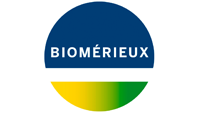bioMérieux EpiSeq™ Powered by Illumina™
NEW: Next Generation Sequencing Service for HAI outbreak management
bioMérieux EpiSeq is the NEW SERVICE by bioMérieux to help you better manage healthcare-associated infection (HAI) outbreaks using Next Generation Sequencing (NGS) Powered by Illumina™.
- Built on bioMérieux’s expertise in microbiology and Illumina know-how in NGS for advanced epidemiological service
- Access a higher level of strain discrimination and characterization through whole genome sequencing
- Track, contain and prevent the spread of pathogens
Upcoming solution - Not launched yet
Not for Diagnostic Use
Maggiori informazioni
bioMérieux & Illumina: partnership of excellence
bioMérieux EpiSeq is a partnership designed to offer you excellence you can rely on for epidemiology solutions. It brings together bioMérieux’s expertise as a pioneer in microbiology with the groundbreaking genomics know how from Illumina.
Next Generation Sequencing: your new, powerful solution for HAI
Healthcare-associated infections (HAI), particularly when associated with antimicrobial resistant organisms, are one of today’s most pressing global healthcare burdens, incurring very high costs both in human and financial terms (see sidebar). The more we know about the pathogens involved in infection transmission or an outbreak, the better we can manage them.
Now, bioMérieux, in partnership with Illumina, brings you a new service for Next Generation Sequencing-based genetic strain typing. NGS on the Illumina MiSeq desktop sequencer enables whole genome sequencing for the highest possible resolution of microbial genomes and hypothesis free testing. The bioMérieux EpiSeq service provides therefore a high-level bacterial strain characterization that gives extremely precise information about the disease agents suspected to be involved in infection transmission or HAI outbreak. This powerful tool enables healthcare institutions and communities to:
- Make faster, better-targeted decisions;
- Implement infection control measures;
- Conduct improved epidemiological investigation;
- Reduce the incidence of future cases;
- Reduce HAI-related healthcare management costs.
The HAI burden – management and prevention
Hospital acquired infections cause significant patient morbidity and mortality around the world: approximately 100,000 related deaths yearly in each the USA and Europe, and far more in low-resource countries. They also incur substantial burdens to health care costs, estimated at €7 billion in Europe; $6.5 billion in USA annually1.
In addition to preventative measures, effective infection control is achieved through active surveillance of infection as well as recognition and intervention of burgeoning disease outbreaks. Molecular epidemiological investigations have become increasingly integral to these functions, and rely on rapid and effective assessment of genetic relatedness among strains2.
1) World Health Organization 2011: Report on the Burden of Endemic Health Care-Associated Infection Worldwide
2) Application of whole genome sequencing for bacterial strain typing in molecular epidemiology, Annals of Nigerian Medicine / Jul-Dec 2014 / Vol 8 | Issue 22015
bioMérieux EpiSeq : THE SERVICE of choice to better manage nosocomial outbreaks using NGS, Powered by Illumina™
Leverage the power of NGS through bioMérieux EpiSeq
The bioMérieux EpiSeq service makes the most advanced Next Generation Sequencing, Powered by Illumina™, accessible to healthcare institutions and public health services. If you are facing a potential healthcare-associated infection (HAI) outbreak, the bioMérieux EpiSeq service offers you – in a few simple steps – critical information to better manage HAI. Here’s how it works:
- Place your order with bioMérieux
- Send your sample to a designated laboratory partner
- Receive your results through secure web access within a few days
- Decide on the actions to implement
The Value of Whole Genome Sequencing (WGS) in Clinical Microbiology
WGS has proven to be invaluable for outbreak detection and surveillance. It has been used to define transmission pathways of infectious pathogens and to support outbreak investigations.
Sequencing of the entire genome provides the ultimate resolution for epidemiological studies, as one is able to see every region of the genome and identify subtle differences overlooked by earlier genotypic techniques3.
3) Bacterial whole genome sequencing: The future of clinical bacteriology, Annals of Nigerian Medicine / Jul-Dec 2014 / Vol 8 | Issue 2
What happens with your sample?
Your sample goes to one of our partnering sequencing labs using NGS technology powered by Illumina MiSeq desktop sequencer. The MiSeq system delivers highly accurate sequence data for pathogen identification, sub-typing and epidemiology. The genetic sequences are then analyzed using bioMérieux’s proprietary software and extensive genome database contribute to creating a database of unprecedented scope with information about virulence and microbial resistance characteristics of key pathogens commonly linked to HAIs. This identifies the infectious agent and the sequence-based genetic variations that help tell the story of its transmission. You receive a dedicated analysis of sequencing data and interactive visualization of comparative results. A cloud server streamlines requests, sample submission and reporting. NGS lab certification ensures standardized results and reporting.
DNA extraction ⇒ sequencing library ⇒ sequencing ⇒ assembling ⇒ results
With results including MLST, Spa, Resistance Markers, Virulence markers and Phylogenetic tree, you gain a whole picture of the causative agent, with advantages like:
- Superior resolution of strain typing for accurate identification of HAI, less prone to false-positive and false-negative findings.
- Next-level epidemiological investigation: Enables exploration of isolates’ virulence genes, antibiotic resistance mechanisms, concordantly with molecular epidemiology investigation.
- Better understanding of transmission events: high-resolution inference of phylogenomic relationships and of the sequence of transmission events.
- Unprecedented ability to define strain relationships for epidemiological investigation of bacterial outbreaks, significantly impacting infection control for better patient outcomes and cost control
- Illumina’s website page on Next Generation Sequencing
- Application of whole genome sequencing 1 for bacterial strain typing in molecular epidemiology.
JCM Accepted Manuscript Posted Online 28 January 2015
J. Clin. Microbiol. doi:10.1128/JCM.03385-14
- Bacterial whole genome sequencing and clinical bacteriology - Annals of Nigerian Medicine / Jul-Dec 2014 / Vol 8 | Issue 2
- Bacterial whole genome sequencing: The future of clinical bacteriology, Annals of Nigerian Medicine / Jul-Dec 2014 / Vol 8 | Issue 2
Impara di più sulle soluzioni per la gestione della resistenza antimicrobica »




